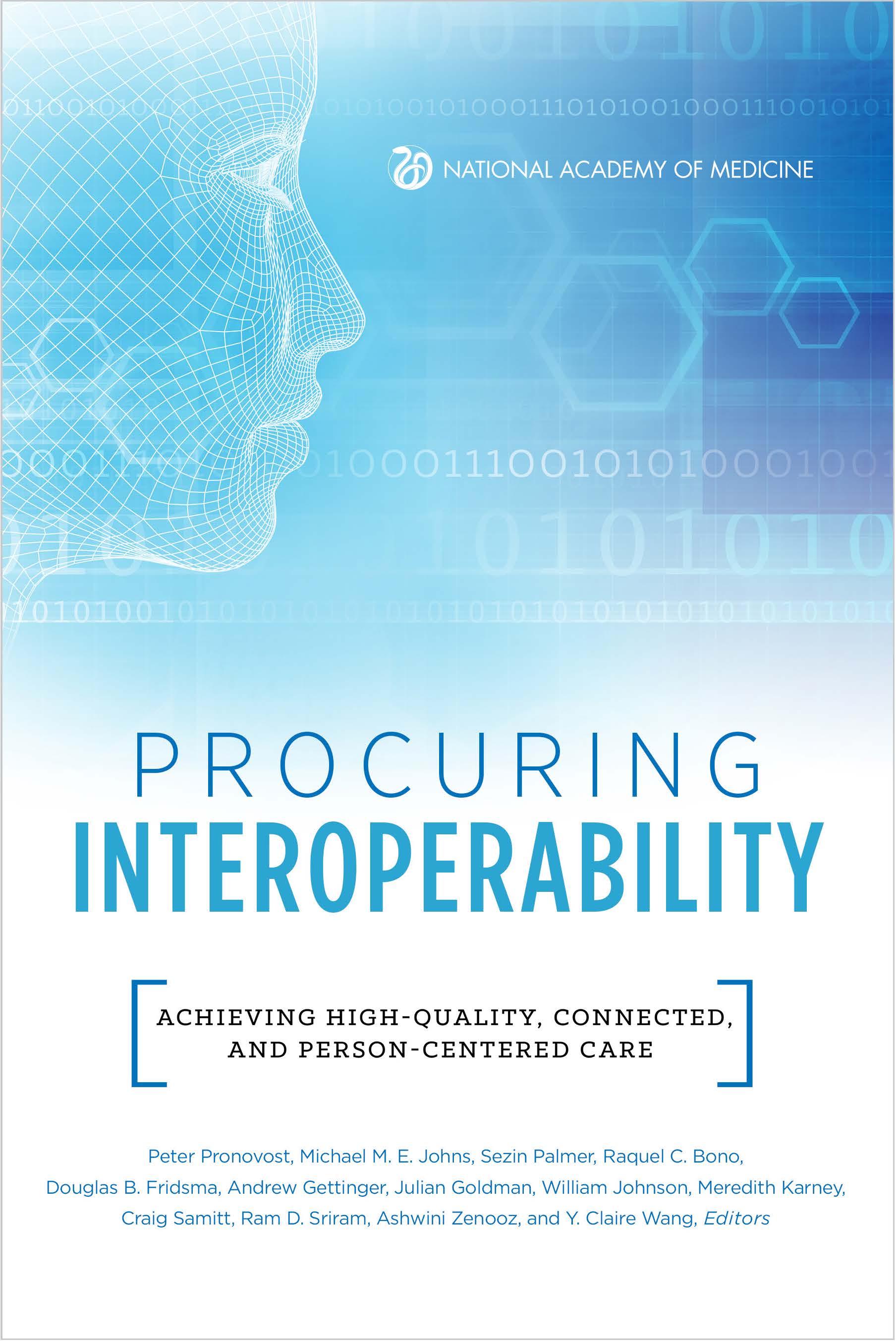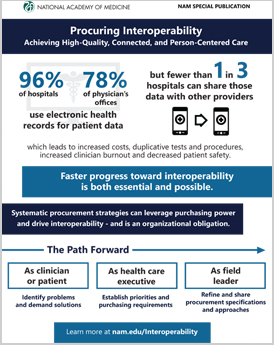Press Release
Johns Hopkins APL Experts Contribute to National Academy of Medicine Publication on Ways to Drive Interoperability in Health Care
While health care has made great strides in recent years with the proliferation of electronic health records (EHRs), interoperability among health care technologies remains very limited, says a new National Academy of Medicine (NAM) special publication, co-chaired by Johns Hopkins APL National Health Mission Area (NHMA) Executive Sezin Palmer, patient safety advocate Peter Pronovost and Michael M. E. Johns of Emory University’s schools of Medicine and Public Health.
“Procuring Interoperability: Achieving High-Quality, Connected, and Person-Centered Care” shows how the lack of interoperability — the ability to seamlessly and automatically deliver data across time and space from and to multiple devices and organizations — results in waste, inefficiency and clinician burnout, which can contribute to patient safety risk.
As of 2016, 96 percent of hospitals and 78 percent of physicians’ offices were using EHRs. However, due to lack of interoperability, information from multiple sources, devices and organizations across the care continuum is unable to flow at the right time, to the right party and for the right patient. For example, less than one in three hospitals is able to electronically find, send, receive and integrate patient information from another provider, leaving most providers relying on paper or fax when sending a care summary for patient discharges or referrals. A 2013 report by West Health Institute estimated that widespread medical device interoperability could eliminate at least $36 billion of waste in inpatient settings alone by, for example, reducing redundant testing, reducing clinician time spent manually entering information, and shortening length of stay through more timely transmission of critical information, such as lab tests.
Hospitals and other health care providers purchase systems and equipment from a variety of different manufacturers, and frequently, each comes with its own proprietary interface technology. As a result, these technologies often cannot transfer data to one another, resulting in the need for patients and clinicians to expend energy manually collecting and collating multiple sets of data from different systems. This results in significant risk of introducing of human errors and critically impacts productivity. Although the proportion of patient harm that is directly attributable to the lack of interoperability is unknown, several common causes of medical errors, including drug errors, diagnostic errors and failure to prevent injury, can partially be addressed by better data exchange among medical devices, EHRs and other health technologies.
“These are tractable problems, and we believe that interoperability is an achievable goal,” said Johns Hopkins APL’s Palmer. “The Applied Physics Laboratory has decades of experience developing and integrating complex systems with disparate subsystems that must work with each other for defense and space applications. We know it can be done. This publication brought together a great multidisciplinary team to examine the issues and offer concrete ways that we can begin to achieve an outcome that will improve health care and save lives.”
“Procuring Interoperability” was authored by leading national experts on health information technology, clinical operations and health care delivery. It outlines steps for health systems to establish comprehensive, ongoing procurement strategies with system-wide interoperability by moving away from serial purchases of individual software and hardware with proprietary interfaces toward those that will interoperate with others through a vendor-neutral open platform.
In addition to Palmer’s role as co-chair, 11 APL researchers and staff members led by NHMA Chief Engineer Alan Ravitz contributed heavily to the publication and authored the technical supplement that outlines concrete ways that health care organizations can define requirements and align their purchasing strategies to achieve system-wide interoperability.
“To ensure that health care dollars are spent in pursuit of health care delivery systems reaching desired levels of care quality, safety, and efficiency, interoperability must be a top priority,” said Victor J. Dzau, president of the National Academy of Medicine. “Only then will the health care industry begin to create truly integrated care systems that continuously provide better experiences for clinicians and patients while achieving better health and health care at a lower cost. The time is now to realize the true potential of health information technology, and all health care organizations have an obligation to see this through so that future generations will lead better, healthier lives.”
The special publication was sponsored by the Gordon and Betty Moore Foundation. The National Academy of Medicine, established in 1970 as the Institute of Medicine, is an independent organization of eminent professionals from diverse fields including health and medicine; the natural, social, and behavioral sciences; and beyond. It serves alongside the National Academy of Sciences and the National Academy of Engineering as an adviser to the nation and the international community. The views presented in this special publication are those of the authors and do not represent formal consensus positions of the NAM; the National Academies of Sciences, Engineering, and Medicine; or the authors’ organizations.
Resources:
www.nam.edu/interoperability
APL’s National Health Mission Area

